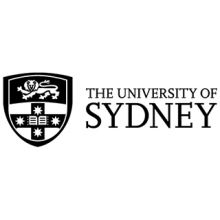The money spent retrenching people from universities in Australia’s biggest state exceeded the institutions’ losses because of border closures, a report shows.
An audit has found that the 10 public universities in New South Wales (NSW) spent A$294 million (£159 million) making 2,162 positions redundant in 2020. This surpassed the A$287 million decline in fees and charges from overseas students, whose numbers fell 7 per cent to about 107,000.
The report, from NSW auditor-general Margaret Crawford, raises questions over whether the retrenchments were justified by the pandemic’s financial impacts.
Damien Cahill, NSW secretary of the National Tertiary Education Union, said the 10 universities had more than compensated for an overall A$361 million in lost fees and charges by clawing back A$436 million in spending on non-employee expenses such as travel, consultants and contractors.
“The redundancies were not necessary,” he said. “Universities have chosen to pursue a strategy that they were looking to do in any case, and they’ve used the crisis as an opportunity.”
While six of the 10 universities recorded deficits last year, Dr Cahill said some of them would have been in surplus without the “redundancy bill”.
Redundancy spending at the state’s richest institution, the University of Sydney, more than doubled to about A$29 million last year. A spokeswoman said voluntary redundancies had been part of a “financial shock recovery plan” that also included deferred capital works, a recruitment freeze and restrictions on travel and equipment purchases.
“We take our financial management responsibilities very seriously,” she said. The redundancies had helped staff who wanted to leave “while providing us greater flexibility to meet the challenges we know will come over the next couple of years”.
Charles Sturt University, which shed almost 200 positions last year, said more than 90 per cent had been voluntary. “It wasn’t done lightly,” said interim vice-chancellor John Germov.
“We identified areas where we believed we could reduce staffing, or improve business processes with fewer staff, and asked people to step forward if they wanted to take a voluntary separation.” He said the redundancies had not been triggered exclusively by Covid, with the university facing a A$16 million “structural deficit” before the pandemic hit.
The auditor-general’s report also shows that Sydney was one of two institutions that increased their earnings from foreign students in 2020, notwithstanding the pandemic’s impacts. Fees from overseas students rose about A$43 million to more than A$1.1 billion, with students from China providing 77 per cent – about 32 per cent of Sydney’s entire revenue.
At one stage last year, Sydney appeared well placed to qualify for the federal government’s JobKeeper employment subsidy programme, which was designed for large organisations at risk of surrendering at least half of their turnover because of the pandemic. Sydney’s application, based on projected losses over a one- or three-month period, failed after the government tweaked the rules to force universities to demonstrate losses over six months.
Sydney said it had applied because “we met the government’s criteria at the time…and had an obligation to our staff to seek support where it was available”.
Dr Cahill said JobKeeper may not have been the appropriate rescue package for universities but insisted that more federal support had been warranted. He said the bailout costs would have been a “tiny fraction” of the total JobSeeker bill.
The report shows that university-controlled entities in NSW attracted almost A$48 million in JobKeeper subsidies last year, while semester 1 international enrolments at Sydney are 33 per cent higher this year than last year – suggesting that many international students who deferred their studies in 2020 have resigned themselves to studying remotely.
Semester 1 international enrolments at cross-town rival UNSW Sydney are up 39 per cent. The two institutions “established fast network access capabilities” to help students in China study online, the report says.
Philanthropic support last year rose 16 per cent at UNSW and 46 per cent at Sydney, it says.
Register to continue
Why register?
- Registration is free and only takes a moment
- Once registered, you can read 3 articles a month
- Sign up for our newsletter
Subscribe
Or subscribe for unlimited access to:
- Unlimited access to news, views, insights & reviews
- Digital editions
- Digital access to THE’s university and college rankings analysis
Already registered or a current subscriber? Login












